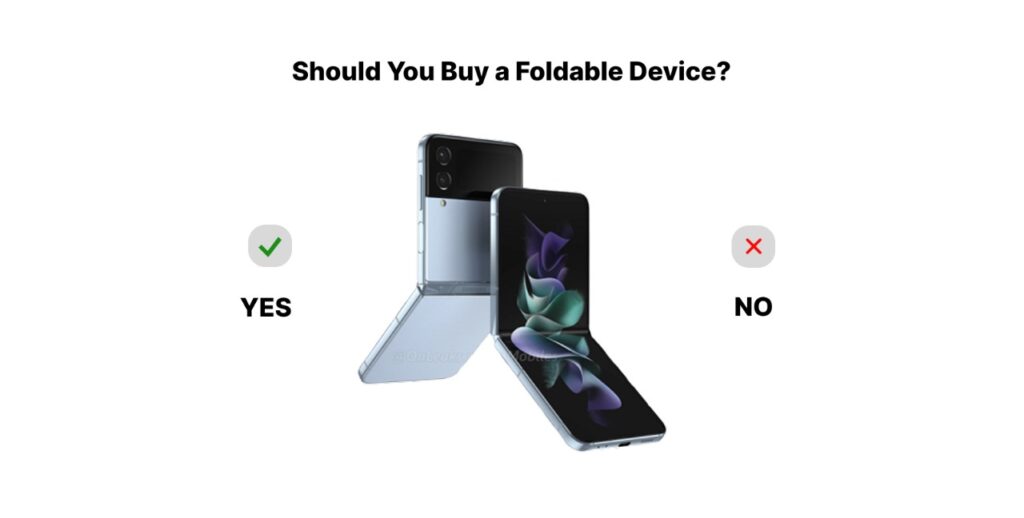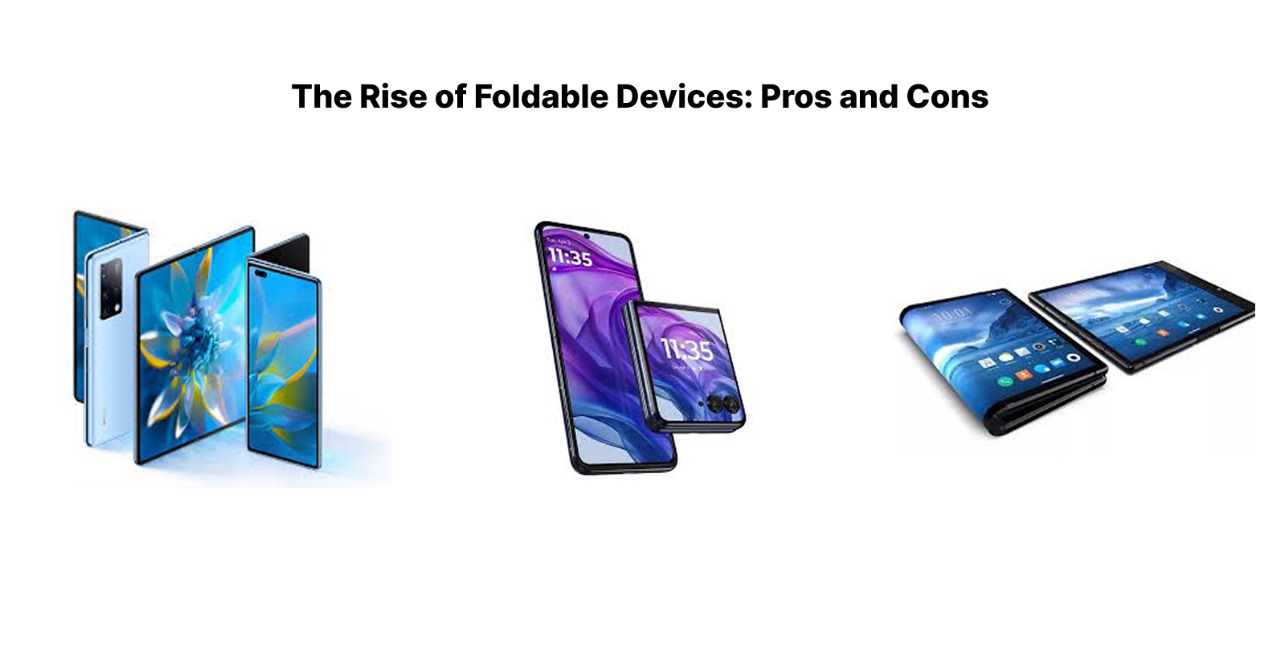Foldable devices are among the most exciting innovations in the world of smartphones and tablets. These devices combine cutting-edge display technology with flexible form factors, offering users a blend of portability and expanded screen real estate. As foldable devices become more popular, it is important to weigh their advantages and disadvantages to understand whether they are worth the investment.
What Are Foldable Devices?
Foldable devices refer to smartphones, tablets, or hybrid gadgets with flexible screens that allow them to bend, fold, or unfold. When closed, they function like standard-sized phones. When unfolded, they provide a tablet-like display, offering a larger screen for productivity, entertainment, or multitasking.
Major manufacturers like Samsung, Motorola, and Google have introduced several foldable models, making these devices more common in the consumer market.
Pros of Foldable Devices
Foldable devices offer several benefits that make them attractive to modern users. Below are the key advantages:
Advantage | Description |
Larger Screen, Compact Size | Combines the benefit of a large display with pocket-friendly size |
Multitasking Made Easy | Ability to run multiple apps side by side |
Innovative Design | Sleek, futuristic look that stands out |
Enhanced Entertainment | Better for watching videos, gaming, and reading |
Flexible Use Cases | Functions as both phone and tablet |
Larger Screen, Compact Size
One of the most significant advantages of foldable devices is the ability to have a large display without increasing the overall size of the device when it is folded. This makes it easy to carry in a pocket or small bag while providing a larger screen when needed.
Multitasking Made Easy
Foldable devices support advanced multitasking features. Users can open multiple apps at once and interact with them side-by-side, enhancing productivity. This is especially useful for students, professionals, or anyone who needs to switch between tasks quickly.
Innovative Design
Foldable devices offer a unique and futuristic design that draws attention. They stand out from traditional smartphones, appealing to early adopters and tech enthusiasts.
Enhanced Entertainment
With a larger display, foldable devices are ideal for consuming content. Whether watching movies, reading e-books, or playing games, the bigger screen provides a more immersive experience.
Flexible Use Cases
Foldable devices serve as both a phone and a tablet. This flexibility can reduce the need to carry multiple devices, simplifying daily life for many users.
Cons of Foldable Devices
While foldable devices have many advantages, they also come with some drawbacks. It is important to consider these before making a purchase.
Disadvantage | Description |
Higher Cost | Foldable devices are often priced significantly higher than standard smartphones |
Durability Concerns | The folding mechanism and flexible display may wear over time |
Added Bulk | Thicker and heavier than traditional smartphones when folded |
App Compatibility Issues | Not all apps are optimized for foldable screens |
Shorter Battery Life | Larger screens consume more power, leading to faster battery drain |
Higher Cost
Foldable devices are still relatively new, and the technology is expensive. As a result, these devices are priced higher than most traditional smartphones, often reaching premium levels.
Durability Concerns
Although manufacturers have improved durability, foldable devices still face challenges. The folding mechanism, flexible display, and moving parts may be more prone to wear and tear compared to conventional phones.
Added Bulk
When folded, these devices tend to be thicker and heavier than standard smartphones. This can make them feel bulkier in a pocket or hand.
App Compatibility Issues
Not all apps are fully optimized for foldable displays. Some apps may not take advantage of the larger screen, leading to awkward layouts or unused screen space.
Shorter Battery Life
Foldable devices generally require larger batteries to support their big displays. However, the power demands of these screens can still result in shorter battery life compared to traditional smartphones.
Larger Screen, Compact Size
One of the most significant advantages of foldable devices is the ability to have a large display without increasing the overall size of the device when it is folded. This makes it easy to carry in a pocket or small bag while providing a larger screen when needed.
Multitasking Made Easy
Foldable devices support advanced multitasking features. Users can open multiple apps at once and interact with them side-by-side, enhancing productivity. This is especially useful for students, professionals, or anyone who needs to switch between tasks quickly.
Innovative Design
Foldable devices offer a unique and futuristic design that draws attention. They stand out from traditional smartphones, appealing to early adopters and tech enthusiasts.
Enhanced Entertainment
With a larger display, foldable devices are ideal for consuming content. Whether watching movies, reading e-books, or playing games, the bigger screen provides a more immersive experience.
Flexible Use Cases
Foldable devices serve as both a phone and a tablet. This flexibility can reduce the need to carry multiple devices, simplifying daily life for many users.
Cons of Foldable Devices
While foldable devices have many advantages, they also come with some drawbacks. It is important to consider these before making a purchase.
Disadvantage | Description |
Higher Cost | Foldable devices are often priced significantly higher than standard smartphones |
Durability Concerns | The folding mechanism and flexible display may wear over time |
Added Bulk | Thicker and heavier than traditional smartphones when folded |
App Compatibility Issues | Not all apps are optimized for foldable screens |
Shorter Battery Life | Larger screens consume more power, leading to faster battery drain |
Higher Cost
Foldable devices are still relatively new, and the technology is expensive. As a result, these devices are priced higher than most traditional smartphones, often reaching premium levels.
Durability Concerns
Although manufacturers have improved durability, foldable devices still face challenges. The folding mechanism, flexible display, and moving parts may be more prone to wear and tear compared to conventional phones.
Added Bulk
When folded, these devices tend to be thicker and heavier than standard smartphones. This can make them feel bulkier in a pocket or hand.
App Compatibility Issues
Not all apps are fully optimized for foldable displays. Some apps may not take advantage of the larger screen, leading to awkward layouts or unused screen space.
Shorter Battery Life
Foldable devices generally require larger batteries to support their big displays. However, the power demands of these screens can still result in shorter battery life compared to traditional smartphones.
Should You Buy a Foldable Device?

Foldable devices represent a remarkable leap forward in mobile technology. They offer a unique blend of style, flexibility, and function that can appeal to many users. However, their higher price and potential durability concerns mean they might not be the best choice for everyone.
Foldable devices are best suited for:
- Early adopters who love trying new technology
- Professionals who benefit from multitasking on a larger screen
- Users who want one device that serves as both phone and tablet
For users prioritizing durability, cost savings, or simplicity, a traditional smartphone may still be the better choice for now.
Final Thoughts
The rise of foldable devices highlights how far mobile technology has advanced. These devices offer new ways to work, play, and stay connected. While they are not without drawbacks, foldable devices are likely to become even more common as technology improves and prices become more accessible.
For those ready to embrace the future of mobile design, foldable devices present an exciting option worth considering.


